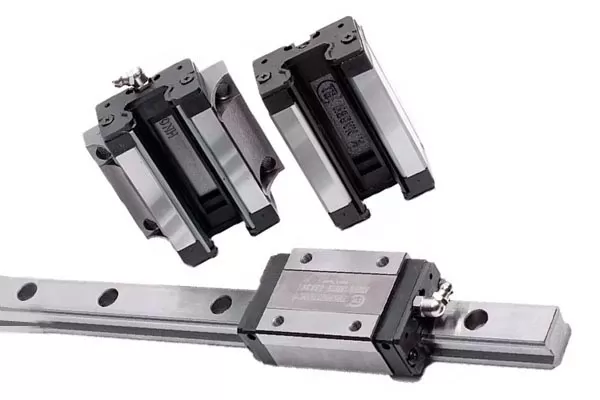○ Linear Bearing
A linear bearing is a component used to support and guide the linear motion of a shaft. It usually consists of an outer sleeve (outer ring), an inner sleeve (inner ring) and rolling elements (such as balls or rollers).
Linear bearings are installed on the shaft and use rolling elements to roll between the shaft and the seat to achieve linear motion. This design can reduce friction and improve efficiency, making it suitable for some applications requiring high speed and high load.

○ Linear Guide
Linear guide is a part used to support and guide the linear motion of the slider or workpiece. It usually consists of guide rails and sliders.
The linear guide rail is installed on a fixed structure. The slide block cooperates with the guide rail and can move in a linear direction on the guide rail. Linear guides are usually used in applications that require high precision and rigidity, such as CNC machine tools, automated production lines, etc.

○ Different objects of action
Linear bearings are mainly used to support and guide the movement of shafts. They are usually mounted on a shaft and use rolling elements (such as balls or rollers) to roll between the shaft and seat to achieve linear motion.
Linear guides are mainly used to support and guide the movement of slide blocks or workpieces. They are usually installed on a fixed structure, and the slider cooperates with the guide rail and can move in a straight line on the guide rail.
○ Structural design is different
Linear bearings usually consist of an outer sleeve (outer ring), an inner sleeve (inner ring) and rolling elements. The rolling elements can be balls, rollers or sliding bodies. The shape of linear bearings is usually more like a ring-shaped structure.
Linear guides are composed of guide rails and slide blocks. The guide rail is usually a straight track, and the slider fits on the guide rail and can move along the direction of the guide rail. The structure of linear guides is more linear and more suitable for high-precision and high-rigidity applications.
○ Different application scenarios
Linear bearings are often used in applications that require larger loads and higher speeds, such as automation equipment, industrial machinery, etc.
Linear guides are usually used in applications that require high precision and rigidity, such as CNC machine tools, laser cutting machines, semiconductor equipment, etc.
In general, linear bearings and linear guides are key components used to achieve linear motion in mechanical systems, but their targets and structural designs are slightly different. Linear bearings are mainly used to support and guide the movement of the shaft, while linear guides are mainly used to support and guide the movement of the slider or workpiece. In actual applications, appropriate linear bearings or linear guides can be selected according to specific needs.
When it comes to linear motion systems, choosing the right components is crucial for optimal performance and efficiency. Linear guides and linear bearings are two common options that are widely used in various applications, including automation, robotics, machine tools, and many more. If you need linear bearings, linear guides and other linear motion system products, please contact Pinsi Linear Motion.


 +8615622924499
+8615622924499
 +8615622924499
+8615622924499

